Learn the best tricks for what to do if your macarons aren’t drying. With these tips, you’ll be able to form the proper skin on your macaron shell before baking.
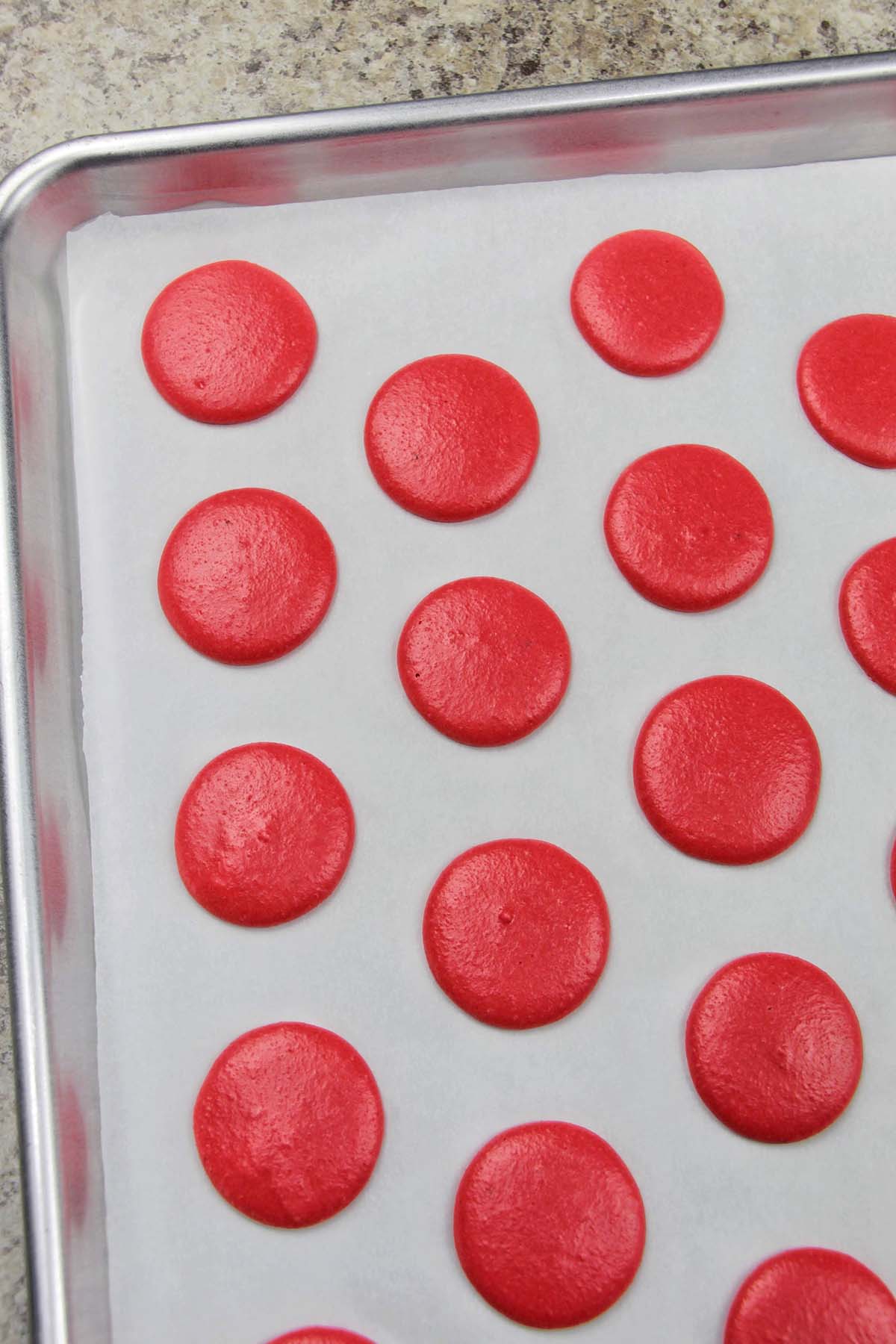
Want To Save This Article?
Enter your email below and we'll send it straight to your inbox. Plus, you'll receive new weekly recipe inspiration.
Macarons are, in my opinion, one of the most fun desserts to make. Even though they’re delicious and fun to bake, they can also be very finicky.
One problem that many bakers have is their macarons not forming a skin on top. Having a dry skin on top of the macaron shell before placing them in the oven is important to prevent cracked tops, hollow macarons, and macarons with little or no feet.
In this guide, I’ll teach you all of my best tips and tricks for helping your macaron skins dry. This will be especially helpful for people who live in humid climates.
Most often, it’s hard to dry macaron shells if you live in a humid or rainy climate. If you live in an environment like this, you likely know the struggle.
As always, remember that it takes some trial and error to bake macarons at home. Don’t give up on your first or second attempt, keep going!
You can always refer to my macaron troubleshooting video or leave a comment below and I’ll do my best to help you out.
What You'll Learn In This Article
- The proper technique for resting macarons.
- Why resting macarons is such an important step in the baking process.
- What may be preventing your macaron shells from forming a skin.
If you are looking for some more specialized help with troubleshooting your macaron problems, sign up for my free macaron troubleshooting guide sent straight to your email.
Traditional Macaron Drying Method
Before we get into all my tips for drying macaron shells, I want to share the traditional method of resting macarons so they form a skin on top. This will help ensure that you are properly executing the technique before moving on to additional troubleshooting steps.
After piping the macaron batter and banging out any air bubbles, the next step is allowing the macaron shellss to dry until they’ve formed a skin.
Typically, you’ll need to allow the shells to rest for about 45 – 60+ minutes on the counter until a skin has formed on top. If you live in a humid climate, this may take up to 90+ minutes.
To test that the macarons are ready to bake, you can both feel and visually inspect the macarons. Here’s what to look for:
- The shells appear matte in color (not shiny like when you first piped them).
- They are dry to the touch. You should be able to run your fingers along the top of the shell without making an indent.
- When you gently and lightly push down on the macaron shell, you can feel some resistance and no mark is left.
Always go by the indicators listed above, not a specific time frame. Different environments can cause your resting time to vary, which is why it’s better to use visual and textural indicators.
If you live in a humid or rainy climate, it’s very likely you’re not resting the macaron shells long enough. It can take up to 90+ minutes for a skin to form.
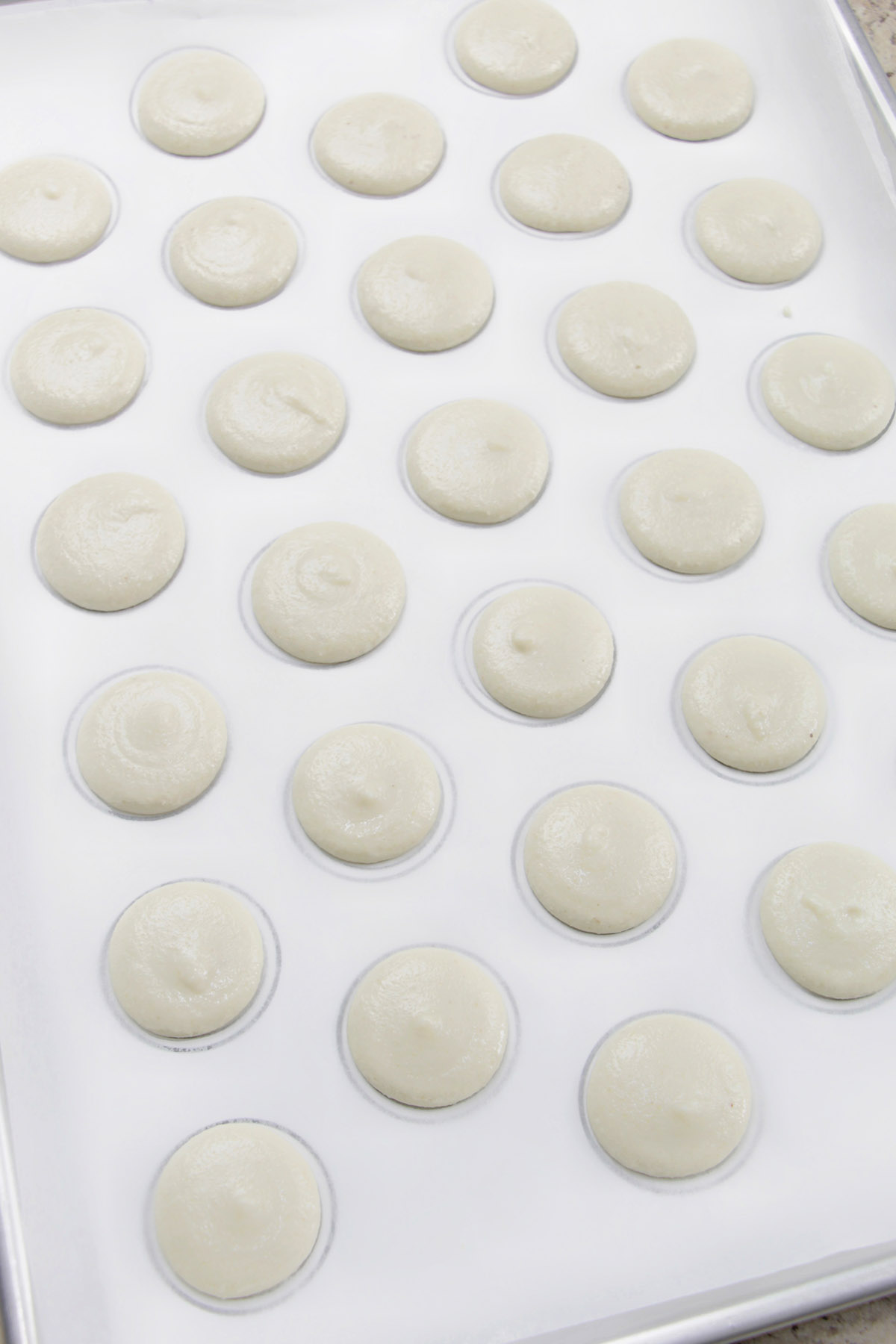
Why Do I Need To Dry (Rest) My Macarons?
It’s important to understand why you need to rest your macarons.
Macarons that haven’t formed a skin on top will not properly bake in the oven. Common problems include cracked tops, hollow shells, or flat macarons with no feet.
The skin on top allows the macaron to properly expand in the oven. The air in the meringue gets pushed upward and outward. This is how the macaron feet form.
Resting your macarons also helps the exterior shell dry up so the top doesn’t crack in the oven. As the macarons expand, a firm top prevents the moist macaron batter from bubbling up and bursting through.
While most traditional and professional macaron recipes suggest some form of resting before baking, there are some no-rest macaron recipes that you could try if you want to skip the resting stage.
In my home kitchen, I did an experiment by testing various resting times. The day I conducted this experiment was a mildly humid day. I tested resting macarons for 40 minutes, 60 minutes, and 120 minutes.
The results were really interesting to see. The macarons that rested for longer time periods had a more durable shell, full interior, and better-formed feet.
Obviously, these results can vary depending on your recipe, macaron ingredients, kitchen environment, and home oven. However, I thought it was very interesting to see the results. Take a look for yourself:
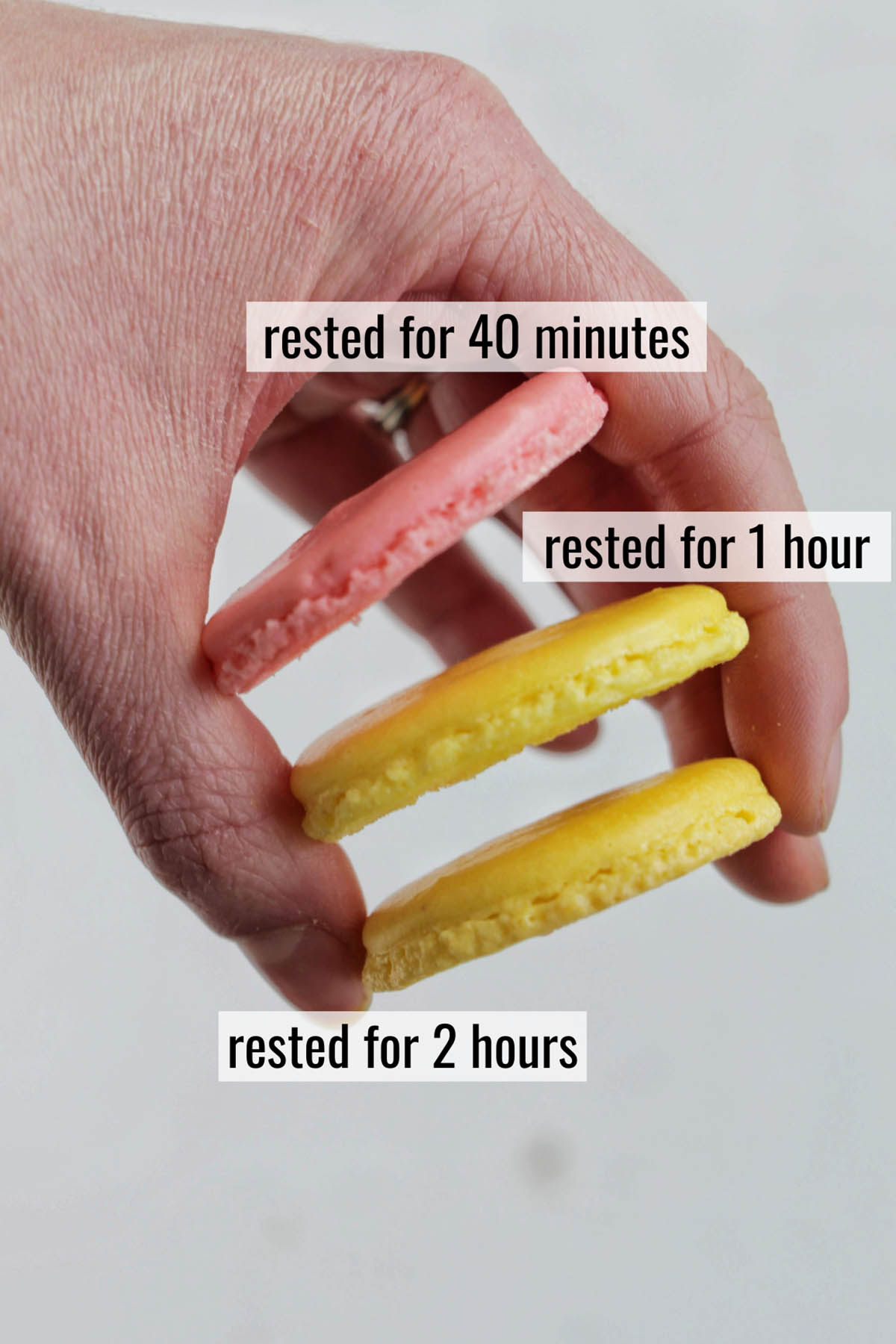
Why Aren't My Macarons Drying?
Let’s talk through some common issues that could be causing your macaron shells not to dry:
- You live in a humid or rainy climate. The excess moisture in the air could be absorbed onto your macaron shells and prevent a skin from forming.
- You’re running water in your kitchen while baking macarons. Similar to living in a humid climate, this could be causing moisture to be absorbed on the shell.
- You aren’t allowing your macarons to dry (rest) long enough. Many recipes call for a short 30 minute rest time. While this may be an appropriate amount of drying time for some, this may be too short if you live in a humid or rainy climate.
- You used liquid food coloring. This can cause too much moisture in the batter and the macarons will have a hard time drying. Always use gel food coloring or powdered food coloring.
Don’t worry! If any of these issues sound like they could be a problem for you, we’ll talk through how to fix them.
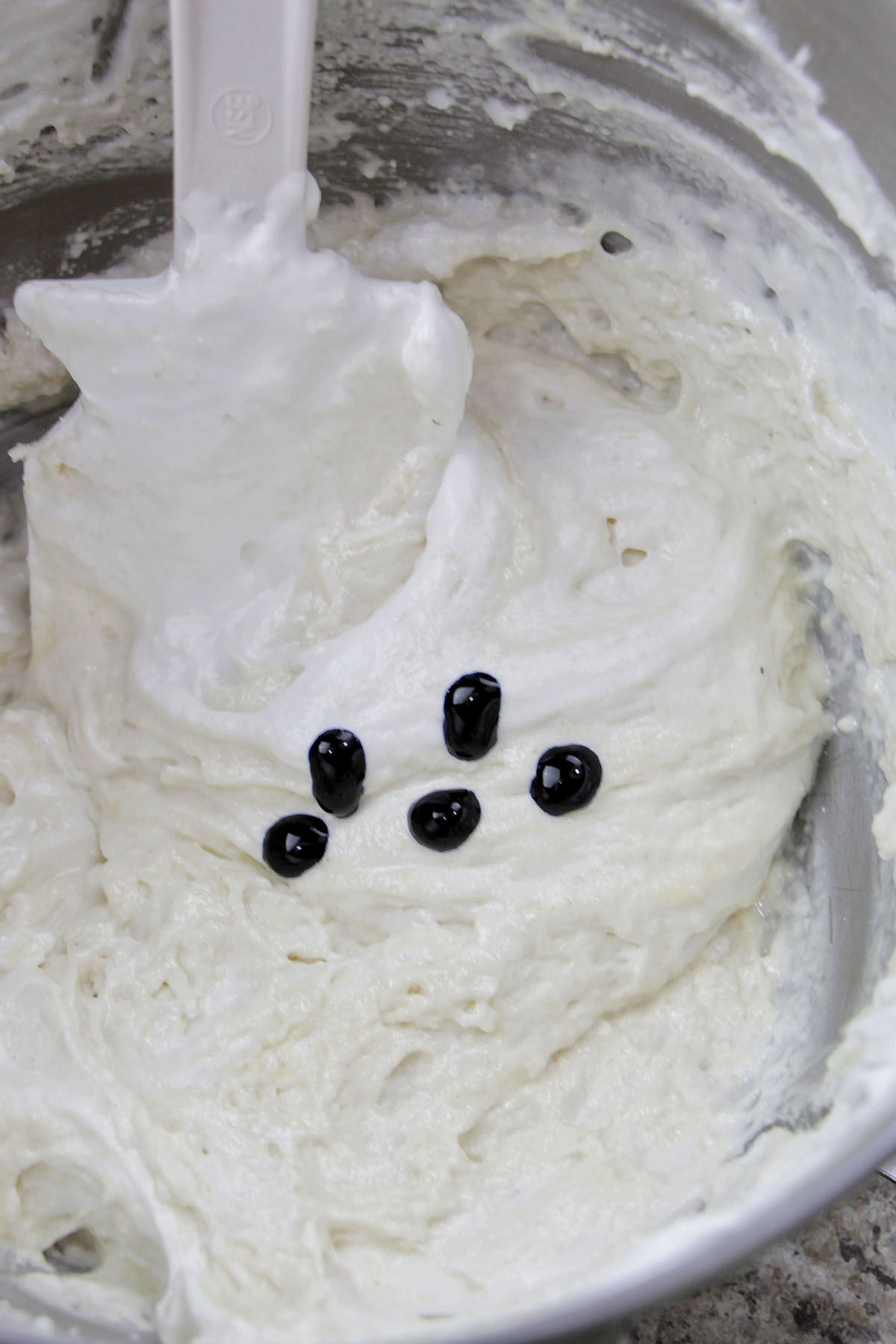
Tips For Drying Macaron Shells
Now that you know a little more about drying macarons, here are some of my favorite tips. These will be especially helpful if you can’t seem to properly dry your macarons or you haven’t been able to get a skin to form on top.
1. Allow the macarons to dry for a longer amount of time: Before you try a bunch of different steps to get a skin to form on top of your macarons, first attempt a longer drying time.
I’ve seen so many macaron recipes that call for a short 20 – 30 minute resting time. For people that live in very dry climates, this time might be sufficient to form the proper skin on the macaron shell.
However, if you have any humidity outdoors or in your kitchen, this is likely not a long enough rest time. I’d suggest at least an hour dry period for most macaron bakers.
Then, if you live in a rainy or humid climate, check your macarons after an hour using the indicators listed above. It may take up to 90+ minutes for a proper skin to form.
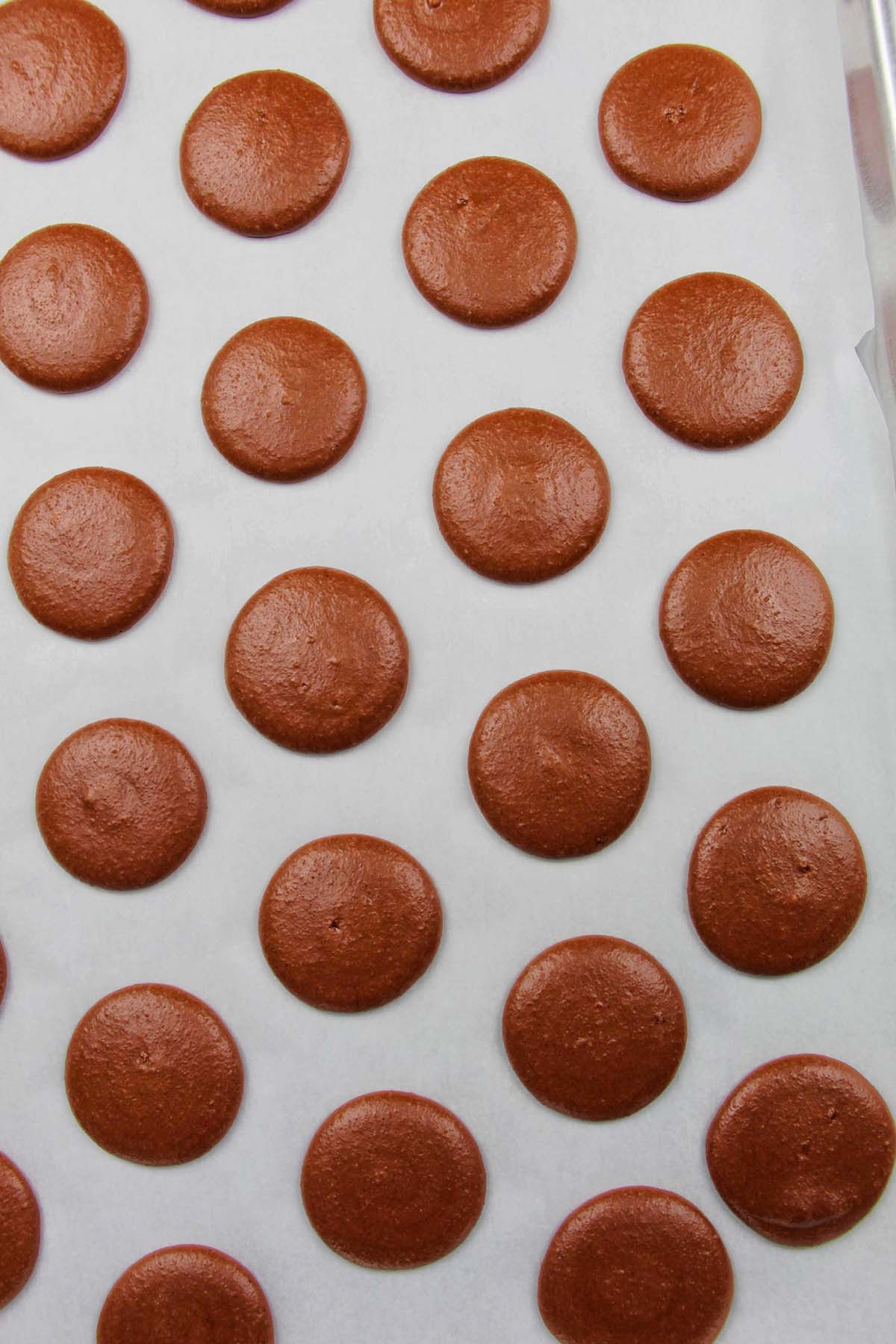
2. Don’t run any water in your kitchen: Excess moisture, like running water or water from humidity, is the enemy of macarons. Many macaron bakers believe that running water can cause excess moisture to land on the shell and cause cracks to form.
Avoid running the water in your sink or dishwasher while baking macarons. This ensures that you’re not adding excess moisture to the air.
3. Use a dehumidifier: If you’re a serious macaron baker and you know there's a lot of excess moisture or humidity in your house, it may be worth investing in a dehumidifier. You can run the dehumidifier for a few hours before baking macarons to remove the excess moisture in your kitchen.
The dehumidifier will help suck out some of water from the air. While this is an expensive investment, it may be worth the money if you bake macarons professionally in your home kitchen.
4. Run a fan or the air conditioning: For a cheaper alternative to a dehumidifier, try using a fan or running the air conditioning. An hour or so before baking macarons, turn your air conditioning on full blast to help cool off the room and make the environment less humid.
Then, when you go to rest the macarons, allow them to dry under a fan. Be sure the fan isn’t too forceful or it could mess up the macaron batter.
The fan, while it doesn’t reduce the humidity, allows the air to circulate around the macarons, which encourages a faster drying time.
5. Age your egg whites: Egg whites are made up mostly of water. In fact, 90% of the egg white is water while only 10% is protein.
If your egg whites are very fresh, they will have a higher percentage of water. This may cause your batter to be too wet, which can make the macaron drying process hard.
To resolve this issue, try aging your egg whites to reduce the amount of water in them.
To age egg whites, separate the egg whites from the yolks 2 - 5 days before baking the macarons. Place the egg whites in a container covered with plastic wrap.
Poke a couple of holes in the plastic wrap, and place the eggs back in the refrigerator. This allows some of the water to evaporate in the fridge.
Once you're ready to bake, allow the egg whites to come to room temperature before whipping them into meringue.
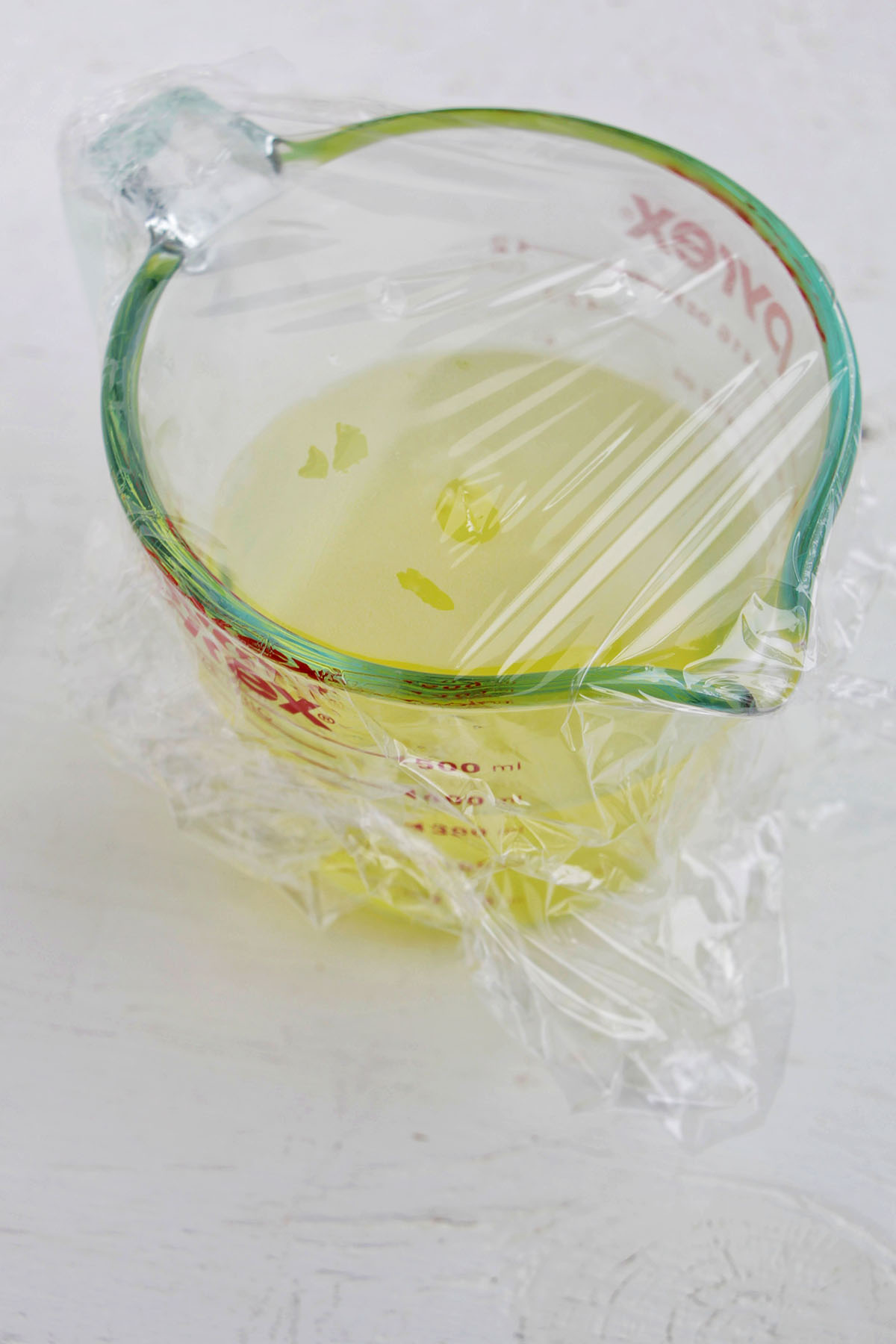
6. Use egg white powder to reinforce the egg protein: Since eggs have such a high percentage of water, it can be helpful to add more protein to them.
An easy way to do this is by adding egg white powder. These dried egg whites have had the water removed, so it helps reinforce the protein structure when you're making meringue.
Usually, you'll want to use about ¼ teaspoon of egg white powder for every 1 egg white. Mix the egg white powder with the granulated sugar before adding it to the meringue.
This tip might not work for everyone, but I'd definitely recommend it if you live in a humid or rainy climate.

7. Dry the macaron shells in the oven: This is a technique I learned from the book Les Petits Macarons. Some macaron bakers will dry their macarons in the oven because they believe allowing the shells to dry on the counter will add too much moisture to the macaron shells.
There are many different techniques for this method. Dry the shells out at a low temperature in the oven, around 200°F (95°C). Then, increase the temperature of the oven to fully bake off the macarons.
You'll have to play around with the specific drying temperatures for your oven and how long it takes to fully dry the shells to form a skin on top.
Expert Tips
If you're struggling with your macarons not forming a skin or not drying, I'd suggest conducting an experiment.
Here's how to conduct your own at-home experiment:
1. Mix up a batch of macarons using a well-tested recipe. I'd suggest using a macaron recipe you're familiar with or have used before. You can always try my French method macarons or Italian meringue style macarons.
2. Next, pipe 4 - 6 macarons on various baking sheets. You can use either a parchment-lined baking sheet or a silicone baking mat.
3. Label each baking sheet with different resting intervals. I would suggest starting with 30 - 40 minutes and increasing the resting time from there.
4. Bake the macarons after each of the resting periods has ended.
5. Repeat this process with each resting time, noting the physical characteristics of each macaron after each test. Allow the macarons to completely cool before checking the interior of the shell.
When you conduct an experiment like this, it allows you to see side by side results and compare which resting time worked best.
Once you've found a resting time that works for you in the climate you live in, you can continue to use that same resting time for (almost) any macaron recipe you make.
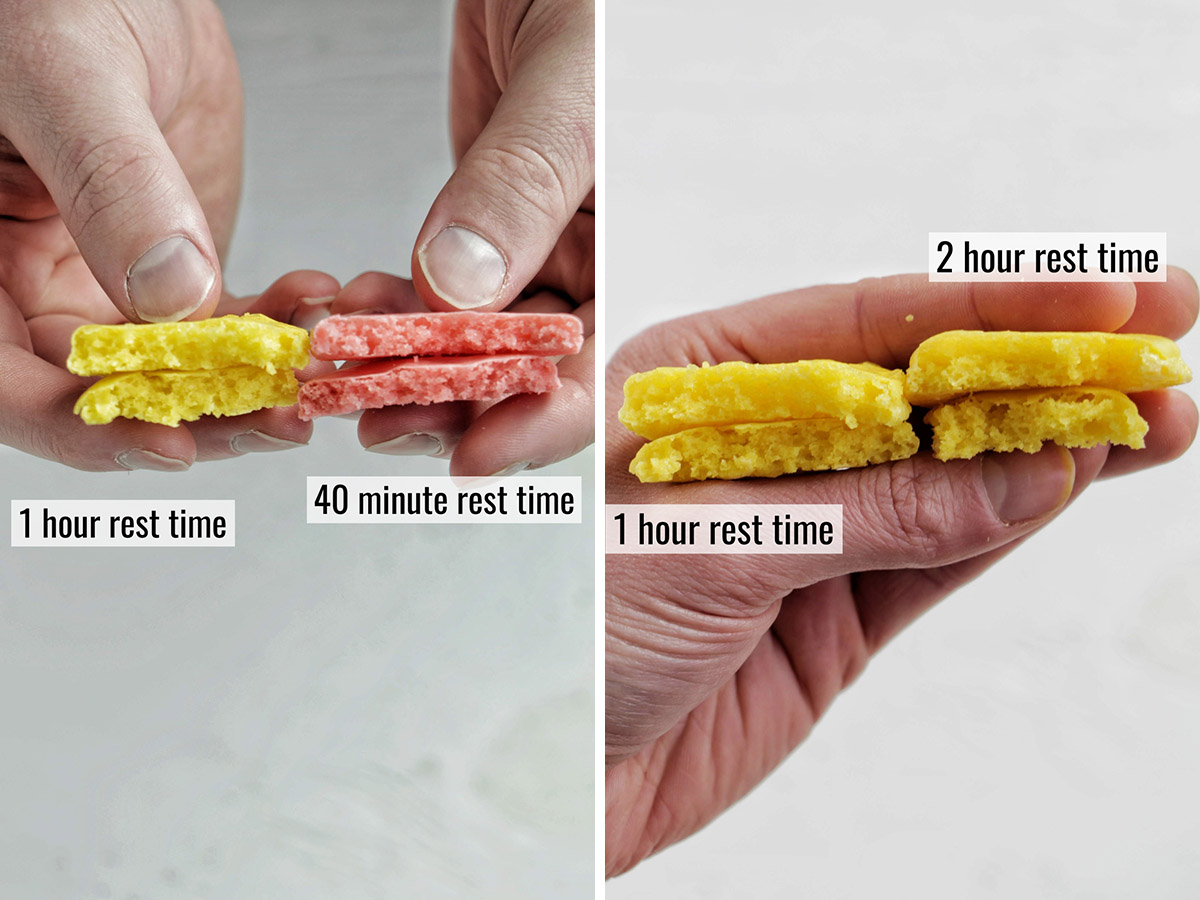
FAQs
Yes, almost all macaron recipes require a rest time in order to avoid cracked tops, hollow shells, or flat macarons with no feet.
The skin on top allows the macaron shells to properly expand in the oven. The air in the meringue gets pushed upward and outward. This is how the macaron feet form.
Resting your macarons also helps the exterior shell dry up so the top doesn’t crack in the oven. As the macarons expand, a firm top prevents the moist macaron batter from bubbling up and bursting at the top.
If you'd prefer not to rest your macarons, you'll need to search for a no rest macaron recipe that's specifically designed to not require a rest time.
Yes, there is always a chance you could dry your macarons too long that they don't have enough moisture on the inside of the shell to properly expand in the oven. However, for the most part, people do not dry their shells long enough for this to happen.
Remember, you can always experiment with a few macaron shells to test the limits of how long you can rest macarons in your environment. Since everyone's environment is a bit different, the length of time you can rest your macarons will also vary.
There are a few reasons your macarons might not be forming a skin:
- You live in a humid or rainy climate.
- You're running water in your kitchen while baking macarons.
- You aren't allowing your macarons to dry (rest) long enough.
- You used liquid food coloring.
Be sure to read the whole article for my best tips on how to mitigate these issues.
There are a few things you can do if your macarons aren't drying:
- Allow for a longer resting (drying) time.
- Don't run any water in your kitchen while baking.
- Run a dehumidifier a few hours before baking macarons.
- Turn on the air conditioning a few hours before baking.
- Allow the macarons to dry out under a fan.
- Age your egg whites 2 - 5 days before making the meringue for macarons.
- Add egg white powder to reinforce the egg protein.
- Dry the macarons by baking them at a low temperature.
More Macaron Troubleshooting Guides
Love this guide? Please leave a comment below. Don't forget to follow along on Instagram, Facebook, YouTube, and Pinterest for more recipes.

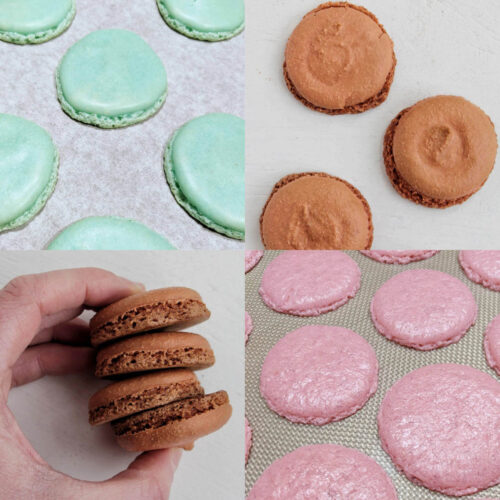
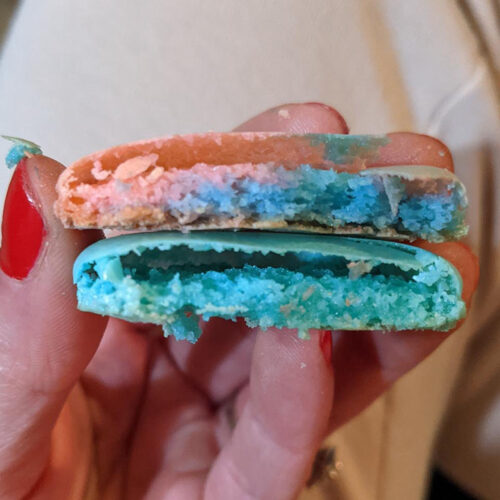

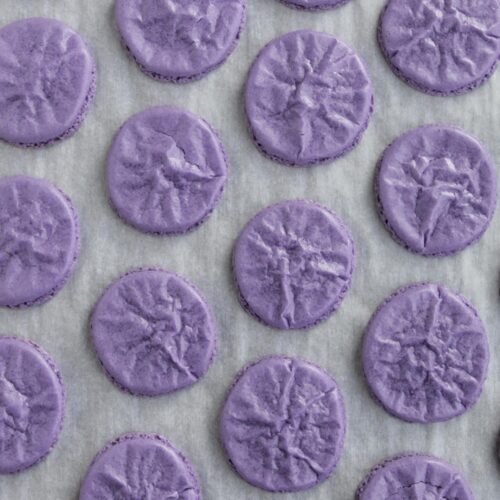
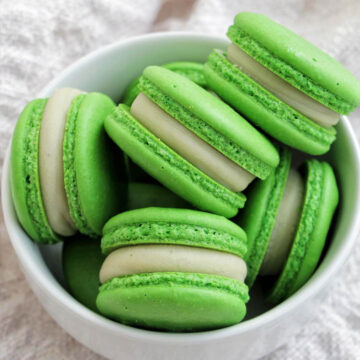



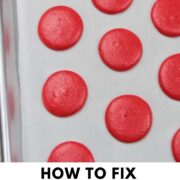
Arl
Thank you sooooooo much for this. I very much appreciate it